Straw Cup vs. Open Cup: Which Comes First? with Dawn Winkelmann, MS, CCC-SLP
- Speech and feeding milestones that are related to open cup and straw cup drinking and how they develop...and in what order
- Why the straw Dawn developed for ezpz has a beginner straw side and an advanced drinking side to promote independent drinking...but also how each serves as a safety mechanism
- Her 3-Phase Developmental Drinking approach that helps babies meet their age-appropriate feeding and speech milestones
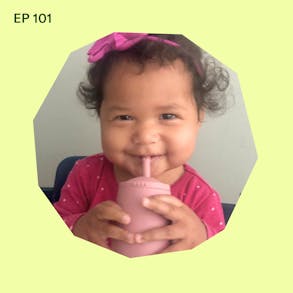
LISTEN TO THIS EPISODE
Episode Description
Which comes first for babies who are weaning: straw cup or open cup? Both are important when weaning off the breast or bottle and in this episode I’m joined by pediatric swallowing expert Dawn Winkelmann, MS, CCC-SLP who is going to talk about the importance of each, in their due time.
Dawn is the designer of the new ezpz Mini Cup + Straw Training System. She is the creator of the 3-Phase Developmental Drinking System that helps transition babies through their developmentally appropriate phases of learning how to drink. In this episode she’s breaking down everything you need to know about teaching your baby how to drink from a straw cup and what comes before and after that skill.
About the Guest
- Dawn Winkelmann, MS, CCC-SLP is a BLW feeding expert and product designer
- She designed the 3 new ezpz Oral Development Tools
- These Oral Development Tools help strengthen your baby’s mouth
Links from this Episode
- ezpz Mini Cup + Straw System use code BABYLED for 15% off at ezpzfun.com
- Baby-Led Weaning with Katie Ferraro program with the 100 First Foods™ Daily Meal Plan, join here: https://babyledweaning.co/program
- Baby-Led Weaning for Beginners free online workshop with 100 First Foods™ list to all attendees, register here: https://babyledweaning.co/baby-led-weaning-for-beginners
Other Episode Related to this Topic

Latest Episodes
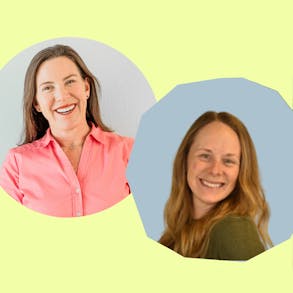
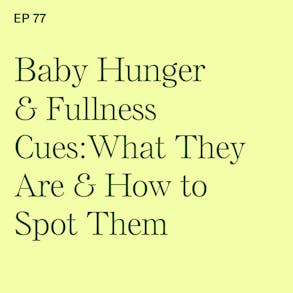
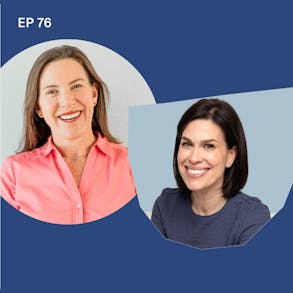
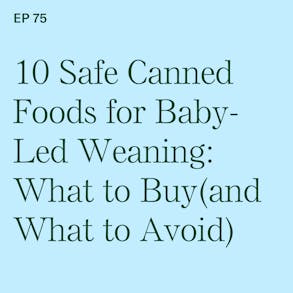
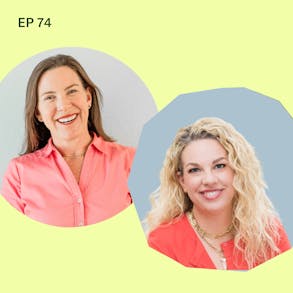
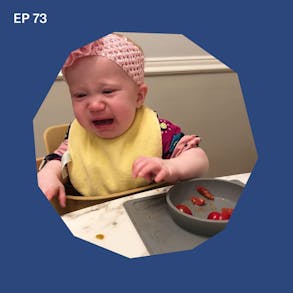
Dawn Winkelmann (0s):
And if we go straight to a straw cup and kind of skip the open cup, it takes a while for kids to be able to master that. And that's when we'll start to really see those babies and young toddlers putting the whole straw in their mouth.
Katie Ferraro (15s):
Hey, there I'm Katie Ferraro, registered dietician, college nutrition professor, and mom of seven specializing in baby led weaning here on the baby led weaning made easy podcast. I help you strip out all of the noise and nonsense about feeding, leaving you with the competence and knowledge. You need to give your baby a safe start to solid foods using baby led weaning. Hey guys, welcome back today. We're talking about straw cups. Now I know you guys are so focused on your baby's learning how to eat, and that is so important, but they also need to be learning how to drink out of something besides the breast or a bottle.
Katie Ferraro (58s):
And we know about the importance of open cup drinking, but today we're going to be talking about straw cups versus open cups and which one comes first. So because of the developmental nature of this topic, I wanted to bring on an expert to talk us through straw cups. And that today is my good friend speech-language pathologist and pediatric swallowing expert Dawn Winkelman. Now Dawn is also the designer of the new mini cup and straw system, which she's going to be taking us through the steps of how this kind of came to fruition sharing, why she designed a very different looking straw cup than what we're used to seeing. And I'm also going to ask Dawn to share a little bit about her three step developmental drinking program.
Katie Ferraro (1m 39s):
And then she'll talk to us a little bit about some of the feeding and developmental milestones that are related to your baby learning how to drink out of a straw cup. So let's dive in talking about straw cup versus open cup in which one comes first with guests, Dawn Winkelman. All right. Hi, Dawn. Thank you so much for joining us back on the podcast again,
Dawn Winkelmann (1m 56s):
Thank you so much for having me, Katie. All right.
Katie Ferraro (1m 58s):
Now, our audience who knows you probably knows you as miss on SLP and you guys, she's a speech language pathologist also specializing in pediatric swelling, but many of you may not be aware that like Dawn's expertise extends into product. She's actually an award winning product designer and much of our audience is familiar with the tiny cup and the mini cup that you designed for ezpz, Dawn. But I'm wondering, could you tell us a little bit of the backstory? What was the impetus for designing this new straw cup system for ezpz?
Dawn Winkelmann (2m 27s):
Thank you, Katie. The rationale behind this and the reason and the energy that made me so passionate about making a straw cup is that I was seeing babies and toddlers not making their straw cup milestones. And then it was also seeing parents having difficulties transitioning off of the bottle at the right time, because they had not introduced a straw cup. And then toddlers were also having delayed speech, which the straw cup actually can help with your toddler speech. So because of those reasons, I really wanted to a system that would actually work for all families and for kids of all abilities.
Katie Ferraro (3m 4s):
Can you talk a little bit about feeding milestones and speech milestones. We have a whole separate episode and I'm going to link to it. You guys, it's six reasons to skip the sippy cup and Dawn did that one. It's one of the most downloaded interview episodes I've done. So she'll talk more about sippy cups in that one and why you skip them. But could you just touch briefly on what milestones are related to feeding and speech that are tied in to straw cups?
Dawn Winkelmann (3m 24s):
Yeah. So around six months of age, we want babies to be able to drink from an open cup. And that is a milestone that usually is shocking for parents. And then around nine to 15 months, we need to introduce a straw cup. And the rationale behind that from a speech standpoint is we're moving musculature of the mouth, specifically the lips in order to help increase babbling, which is actually going to start during that time as well. Okay.
Katie Ferraro (3m 53s):
What is the difference between the beginner straw side versus the advanced straw side of your straw cup system? Like to me, a straw is a straw, but then I saw your straw. I'm like, well, hold up. This straws different.
Dawn Winkelmann (4m 4s):
Yeah. So the rationale behind all the changes in the straw cup that are very different than other cups on the market is basically my twenty-five plus years of experience being a feeding expert, teaching parents, how to introduce a straw cup to kids. And there's so many unsafe things about straw cups out there. The first is the straw link, most feeding therapists. We cut straws in half when we're teaching straw drinking. And we do that because the shorter straw is easier and safer for children to learn how to drink out of than a long one, because kids actually have to hold their breath to be able to suck up the fluid.
Dawn Winkelmann (4m 44s):
And what happens is that babies and toddlers can't hold their breath very long and they don't really have experience with that. So having these really long straws on put children at risk for having gagging, coughing, and liquid coming out of their mouth or nose and choking. So I was seeing so many children struggle with that, that I really wanted the strong link to be safe, make it easy for parents to be able to teach drug drinking, and also be able to have these two sides. Like we were talking about the first side is the beginning straw, which has the sensory bumps at the top of the straw. And what that does is actually give a child the sensory feedback that they need in order to be able to know where their lips are supposed to be a lot of kids, masters drop drinking, but they're putting their entire mouth over half of the straw.
Dawn Winkelmann (5m 33s):
And so they're actually doing more suckling than actually putting their lips around the straw and sucking. So we want them to not suckle. We want them to actually suck. And so one of the safety features of the mini straw is having those sensory bumps there to be able to give the kids that feedback and let them know where they're supposed to place their lips. And then also on that training end of the straw it's too. And the rationale behind that is that we want to keep kids, heads midline, usually with other straws, they have to tilt their head back, which opens up their airway, allowing liquids to possibly go into their lungs. And so having that curvature and those sensory bumps on the training side of the straw really makes it easy to be able to introduce straw drinking.
Dawn Winkelmann (6m 17s):
Now, once parents see that their child is able to use outside of the straw safely, and it can take a couple of weeks or even a couple of months, but they're consistently using that straw safely and they could just flip the straw over. And then we have the advanced side of the straw, which does not have the curvature and does not have the sensory bumps. And it looks like a regular school.
Katie Ferraro (6m 34s):
My advanced drinkers, Gus and Hannah are loving taking the straw out and flipping it back and forth and back and forth. Like they're having so much fun with it.
Dawn Winkelmann (6m 42s):
So thats great. And we're really hearing more of that, that the kids are actually being able to do that on their own saying, okay, Hey, I'm fatigued at dinner and I kind of need the sensory bumps to be able to encourage me, but for breakfast and lunch, when I'm not so fatigued, I don't need it. And I can use the advanced draw. So it's fun to actually watch kids, being able to have the independence, which is what we all want is having babies lead the way with being able to help their own advancements.
Katie Ferraro (7m 8s):
And I love how you feeding therapists are always like cutting straws in half. And like you used to duct tape plates down to the table and that you see like these deficits in the existing products, but then you actually go out and design the solution that I'm sure like every feeding therapist is like, thank you Dawn. But as a parent too, like thank you because I have to admit there was a lot of limitations. I know I did a post last year. I reviewed 20 different weighted straw cups because people had asked for it and there wasn't one that I would have used in my own house. And like, I'll just skip it. So thank you for developing a product that parents appreciate that I know your colleagues that are feeding therapists really do as well.
Dawn Winkelmann (7m 42s):
Thank you.
Katie Ferraro (7m 43s):
Okay. So I know when I was a new mom and I was like learning about weaning my babies off of breast or bottle, and I was always confused about the order of things. So I just assumed it went breast or bottle to sippy cup. And then to an open cup, as I mentioned, you shared on our previous episode, six reasons to skip the sippy cup with Dawn Winkelman. She went all through the reasons why we don't want to do sippy cups, but I'm curious if you could tell us why open cup drinking mastery. If I understand it correctly, should come before straw
Dawn Winkelmann (8m 8s):
Cup. Yes. And reason why is we want children to actually make the milestones around the age that we're expecting this development to occur. First is we want babies to be able to drink from an open cup, held by an adult at six months. And we're doing that to be able to establish the development we're working on the closure during that time. We're also starting solids during that time. And for those of you out there that are starting solids and your baby has an open mouth posture and all the food's coming out and nothing's being swallowed. This is an area that we really want to focus on is having that lip closure. And you can teach your baby how to do that by mastering an open cup. But then around nine months, we can start to introduce a straw cup.
Dawn Winkelmann (8m 52s):
Now I see some other feeding therapists, even parents trying to start straw cup a little bit earlier. And what happens with that is that again, they're not able to hold their breath for very long. They're not able to actually have that lip rounding because we need to have lip closure first from a muscular standpoint, before we have lip rounding next. And that usually again, starts to happen around nine months. So we can start introducing a straw between nine and 15 months of age and to be able to help that developmental progression. And then we're also changing up liquids during that time to the liquids that we're putting into that open cup is breast milk or formula. And then the liquids that we're starting to put into the straw cup or breast milk formula purees, and even water at that.
Katie Ferraro (9m 37s):
So just to get that straight, you're basically saying if I hear you correctly, that the lip closure is associated with the open cup drinking and that comes before the need for the baby to learn lip rounding, which is what they need the straw from. Is that right? Yes,
Dawn Winkelmann (9m 51s):
Absolutely. And if we go straight to a straw cup and kind of skip the open cup, it takes a while for kids to be able to master that. And that's when we'll start to really see those babies and young toddlers putting the whole straw in their mouth. And what happens with that is that we are using oral musculature in the wrong way. So we want to be able to develop the mouth to be able to not only make those feeding and swallowing milestones, but also for the speech milestones that are coming in.
Katie Ferraro (10m 22s):
And one thing I've learned from working with you over the years is just to remind parents that developing these feeding milestones and are achieving them. They don't happen in a vacuum that at the same time, your baby's working towards feeding milestones, there's also working towards other developmental, including speech milestones. And I think it's so important that speech language pathologists are directly involved in infant feeding because as parents, we need to remember, it's, there's the speeches coming next. And we need to do the things in feeding that will actually help promote baby's ability to meet the speech milestones and being able to drink out of an open cup is a huge one. And I finally see parents getting that message. And again, that's due to a lot of the work that you do, Dawn, which is reminding us that these things are all linked.
Dawn Winkelmann (11m 2s):
It's really important. And at you're right, more parents are learning about that because we're the experts in swallowing. And so it's interesting. The mouth is for respiration foundation and for swallowing, which is our area of expertise. And that's why when parents ask me and they're like, oh, my baby's having difficulty swallowing. You want to find a speech language pathologist that specializes in swallowing. And that also is able to kind of keep going with speech too. And that's something that happens often is that a family will be struggling with some feeding issues and we start mastering those feeding concerns. And then of course, you know, if when there's feeding delays there are usually these speech delays as well. So then we kind of switch her therapy from feeding goals and objectives to speech goals and objectives.
Dawn Winkelmann (11m 45s):
And kids can be out of feeding therapy much quicker because we're really mastering both of those areas at the same time.
Katie Ferraro (11m 52s):
All right, Don, let's talk about what put in the straw cup. I know you and I are both proponents of breast milk and or formula only in the open cup early on, but what do you advise for parents as far as putting in the straw cup with regard to fluids?
Dawn Winkelmann (12m 6s):
So you can continue with breast milk or formula, or like you say, you know, being able at 12 months to move on to cow's milk and I'll let you talk more about that, but we can also put in purees, we can put in smoothies and we can start putting in water. And so all of those different textures can actually do well in the mini cup and straw training system, because I designed the diameter of the straw to be able to help thin liquids as well as thick liquids. And I wanted to do that for all these reasons for texture, but also for kids who have dysphasia, which is a swallowing disorder and a lot of children need to have their liquids thickened in order to be able to swallow safely.
Dawn Winkelmann (12m 50s):
And a lot of the straw cups out there are so narrow that they are unable to be able to use a straw cup and again, not being able to achieve that milestone. So I wanted our struck cup to be able to work for kids of all abilities and be able to be successful.
Katie Ferraro (13m 5s):
And if you guys have more questions about water and why both Dawn and I actually recommend on waiting on water, we have different reasons me as a dietician and Dawn as a speech language pathologist. If you go back to episode 24, it's called water when to offer your baby water and how much, and there's lots of great questions answered in there as well. Okay, Don, I know with my oldest, I never did a straw cup. Like I don't even know if that they existed or I knew that they existed, but is it imperative that a baby learns how to drink out of a straw cup? Or if you just decided to go like to the open cup, can you keep your baby on an open cup or like, do you definitely have to introduce the straw cup?
Dawn Winkelmann (13m 38s):
I really encourage parents to introduce a straw cup because we have a developmental milestone for that. It's also, again, triggering those muscles of the mouth that are needed for speech. And of course it's a convenience and safety issue too. When you're traveling, most families want to be able to have a straw cup if you're taking your child to daycare or to school, they're insisting on a straw cup versus an open cup. So is this skill that we need to master at home and to do it safely, like using the training system that I developed and making it easy for children to be able to drink out of all types of cups, open cups, as well as straw cups.
Katie Ferraro (14m 14s):
And Dawn, I know you do like full blown hour and multiple hour log trainings on this. So to answer it in one question on a podcast might not be possible, but could you explain at least like high level overview of your three-step developmental drinking program?
Dawn Winkelmann (14m 28s):
So my rationale for the developmental drinking system and why it's so important for parents is to be able to establish open cup drinking and straw kept drinking. So if you get the mini cup instruct training system on the back of the packaging has my three-step system. So the first step is making sure that we're working on an open cup drinking, establishing those milestones. And then the second step is using beginning training straw to be able to make your child feel comfortable and safe and secure with using a straw cup. And then once your child is able to do that successfully, you're in step three, which is the advanced training straw. And you can do all of that one product.
Katie Ferraro (15m 8s):
So don't throw the packaging out is what you're saying.
Dawn Winkelmann (15m 11s):
Correct.
Katie Ferraro (15m 11s):
All right, Dawn, where can our audience go to learn more about your work and in particular, the mini cup straw training system that you developed for ezpz?
Dawn Winkelmann (15m 18s):
Yeah, so they can go to my website at msdawnslp.com. That's msddawnslp.com. And they can purchase the products at ezpzfun.com
Katie Ferraro (15m 31s):
All right. And I'm going to link up all of Don's resources, including some of the other episodes that we referenced in the show notes for this episode, as well as if it's okay. Don, I want to show that image that you guys have that has the back of the packaging. That kind of explains how the system works. If I think once people see that they're like, oh, this is a really different straw cup than anything else that's ever been created.
Dawn Winkelmann (15m 51s):
Yes, absolutely. Thank you so much for sharing that. Sure. And that'll be on the show notes for this episode at blwpodcast.com. And if you guys want to check out the ezpz straw cup that Dawn created, if you go to ezpzfun.com, the code KATIE10 always works for 10% off there. Well, Dawn, thank you so much for being here. I really appreciate it. And congratulations on the straw cup, it's a really important part of the feeding world now. Thank you so much for having me. And I hope that all of you explore some mealtime independence with the structure.
Katie Ferraro (16m 20s):
Well I hope you guys enjoyed that episode. All about the straw cup versus the open cup with Dawn Winkelman. She is a speech language pathologist. She's also a pediatric swallowing expert, and then she's an award-winning product designer on top of that. So I think there's nobody more well-equipped in the entire world of intervening to be talking and teaching about straw cups than Ms. Dawn. I am going to put a link to all of the resources that she mentioned in this interview on the show notes for this episode, which you can find at blwpodcast.com forward/101. And I'll also be linking to the new ezpz straw cup system that she designed for ezpz. If you guys ever want to check out their products, my discount code KATIE10 works for 10% off at ezpzfun.com.
Katie Ferraro (17m 5s):
That is my affiliate discount code. Again, the code with all of the links that Dawn mentioned will be in the show notes at blwpodcasts.com/101. Thanks for listening. Bye now.
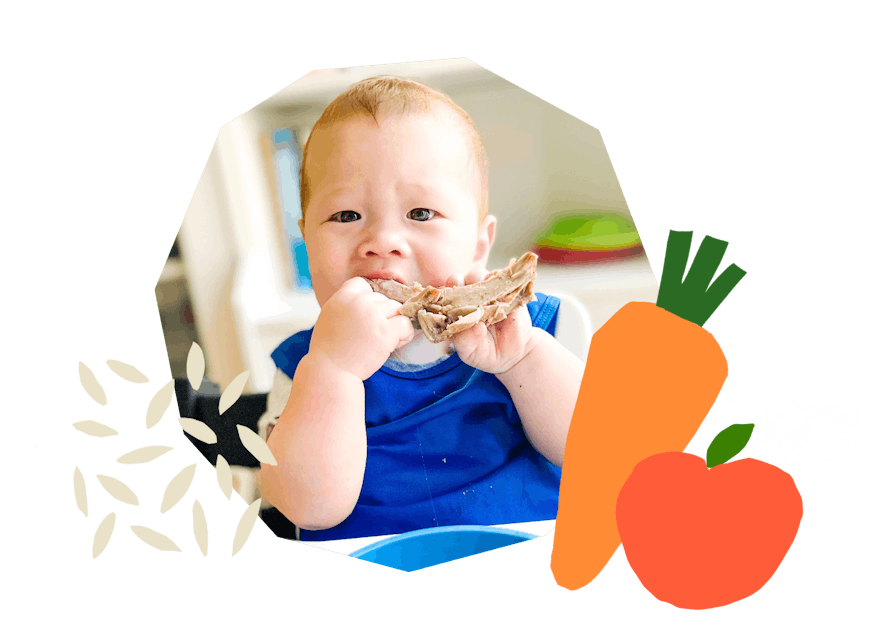
The Program Baby-Led Weaning with Katie Ferraro
A step-by-step digital program for starting solid foods safely and navigating the original 100 FIRST FOODS™ meal plan with baby-led weaning.
 EXPERT-LED, PROVEN APPROACH TO EATING REAL FOOD
EXPERT-LED, PROVEN APPROACH TO EATING REAL FOOD CONCISE VIDEO TRAININGS TO MASTER BABY-LED WEANING
CONCISE VIDEO TRAININGS TO MASTER BABY-LED WEANING 100 FIRST FOODS DAILY MEAL PLAN WITH FOOD PREP VIDEOS
100 FIRST FOODS DAILY MEAL PLAN WITH FOOD PREP VIDEOS
Baby-Led Weaning for Beginners Free Workshop
Is your baby ready to start solid foods, but you’re not sure where to start? Get ready to give your baby a solid foundation to a lifetime of loving real food…even if you’re feeling overwhelmed or confused about this next stage of infant feeding.
Get baby-led weaning recipes and tips delivered to your email inbox.

